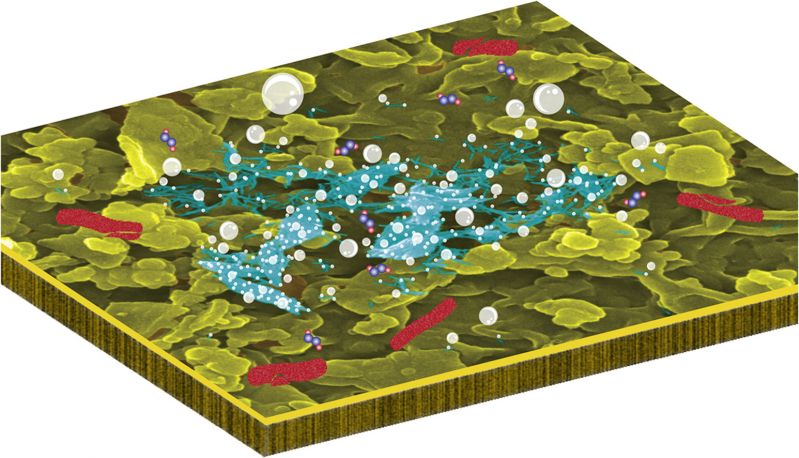Eliminating Fouling in Reverse Osmosis Membranes
Published on by Water Network Research, Official research team of The Water Network in Technology
'Reactive micromixing eliminates fouling and concentration polarization in reverse osmosis membranes' is the new research article published in Elsevier's Journal of Membrane Science by researchers from The Pennsylvania State University.

Graphical abstract, Source: Science Direct
Here's the abstract:
Reverse osmosis and nanofiltration membranes are used for desalination, wastewater reuse, and industrial water recovery but suffer from high-energy usage during operation.
High-energy usage results from membrane fouling and concentration polarization (CP). Fouling is the time dependent deposition of organic macromolecules and particles, as well as the growth of bacterial biofilms on membranes. CP is the accumulation of rejected solutes on the membrane, which reduces the driving force for filtration.
We demonstrate a simple, nanoparticle-based, in situ approach of inducing chemical reaction-based micromixing on the membrane surface that can simultaneously eliminate fouling and CP. Commercial desalination membrane surfaces were modified with the bioinspired adhesive polymer, polydopamine, and catalytic metal oxide nanoparticles (CuO or MnO2) were grown and anchored to its surface.
This modified membrane catalyzed the degradation of hydrogen peroxide pulse-injected into the feed solution at low concentrations (2–7 mM). The oxygen molecules and hydroxyl radicals generated degraded organic matter and efficiently prevented particle and cell deposition through bubble-generated mixing while causing no observable membrane damage.
The reaction generated convection also enhanced solute back diffusion mass transfer coefficients by more than an order of magnitude, resulting in near-complete elimination of CP. Our preliminary results also indicate control of E. coli biofilm using the immobilized CuO nanoparticles.
Source: Science Direct
Media
Taxonomy
- Treatment
- Water Reuse & Recycling
- Reverse Osmosis
- Membranes
- Reuse
- Membrane Technology
- Reverse Osmosis
- Membrane Filtration
- Biofilm Monitoring Systems
- Polymer Membranes